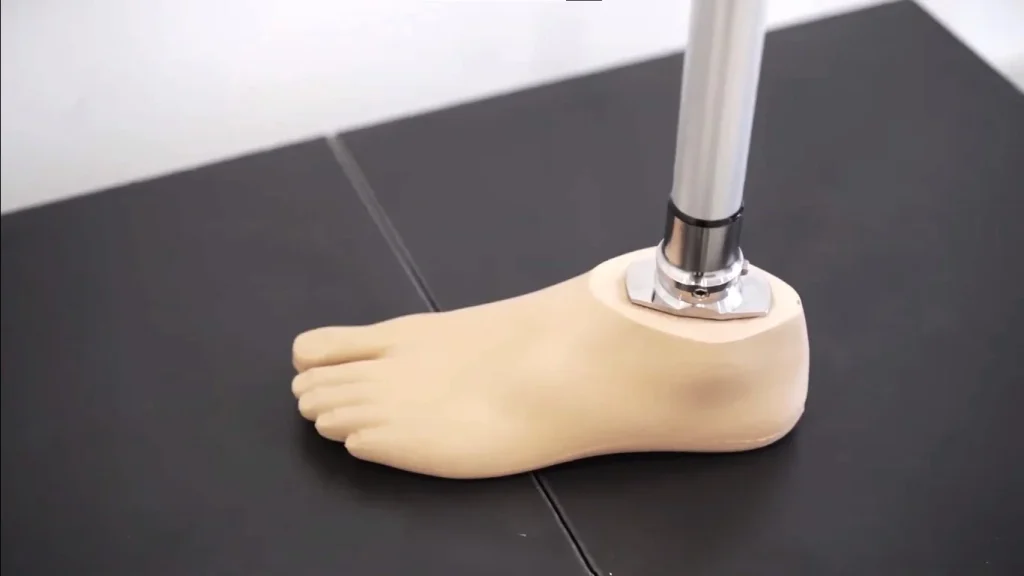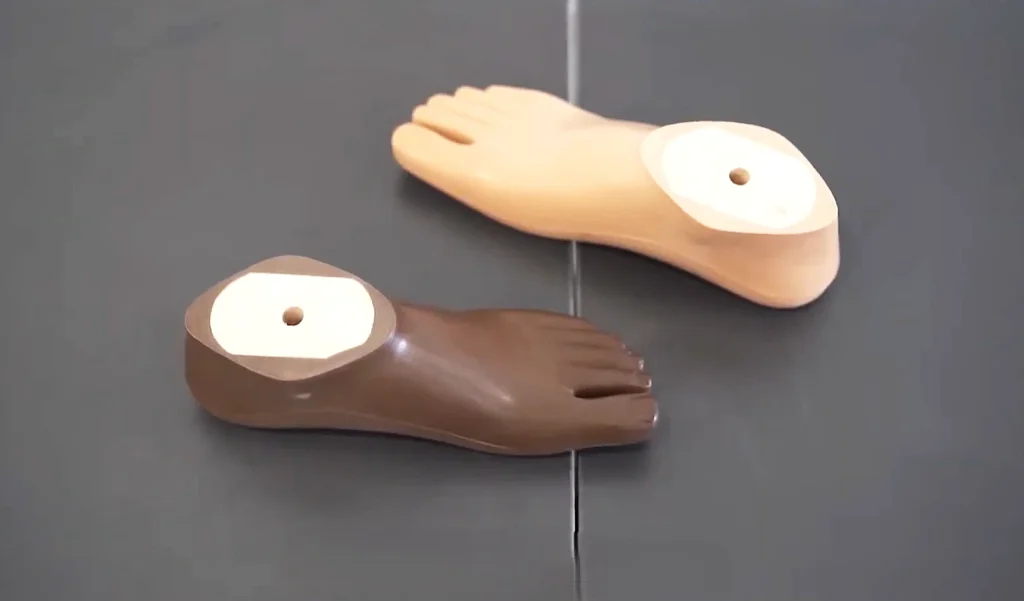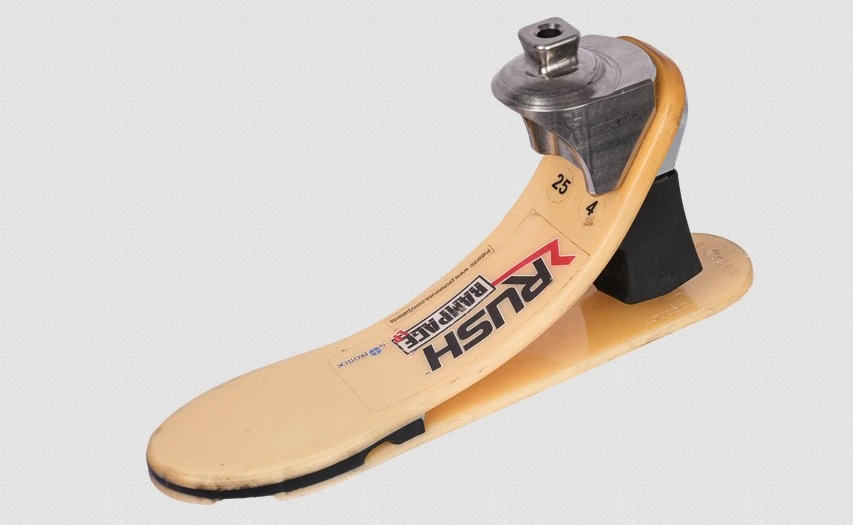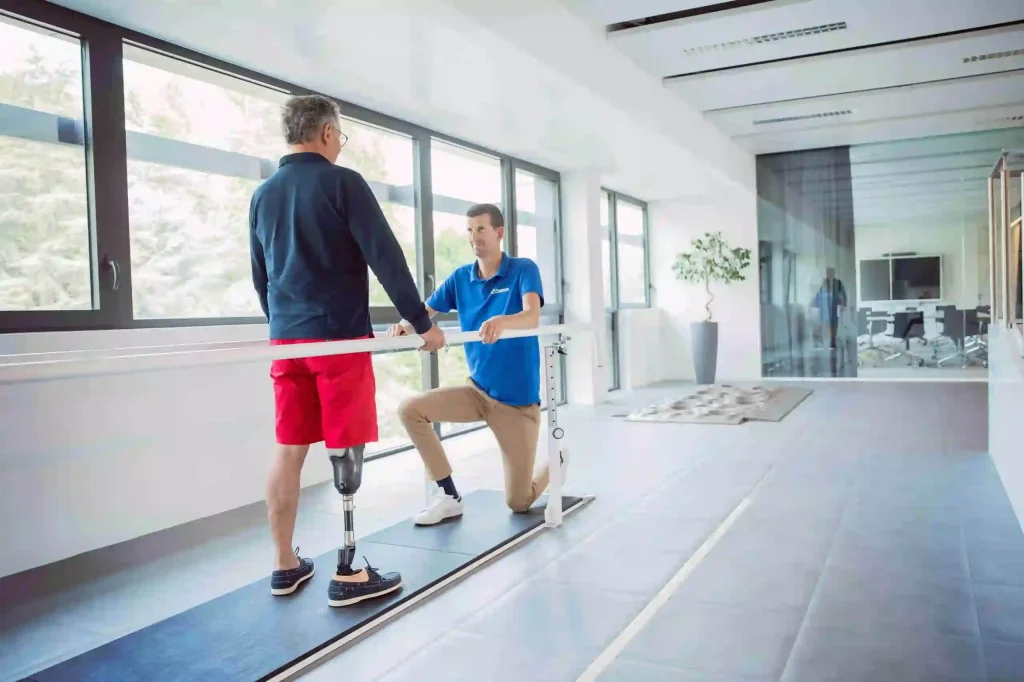
Choosing an artificial foot isn’t just a medical decision, it’s a life decision. Whether you’ve recently had an amputation or are considering an upgrade, the right prosthetic foot can help you walk more comfortably, regain confidence, and get back to doing the things you love.
One option you’ll come across often is the SACH foot, a reliable, affordable, and time-tested design. But is it the best prosthetic foot for you? Let’s explore different types of prosthetic feet, compare features, discuss customization, and help you make a confident choice.
What is a Artificial Foot?
A prosthetic foot is an artificial limb designed to replace a lost foot due to amputation, injury, or medical conditions like diabetes. Modern prosthetic feet help individuals walk, run, and perform daily tasks with ease. These artificial limbs are customized based on the user’s mobility level and lifestyle requirements.
Different Types of Artificial Feet
Artificial feet come in several designs to match different activity levels, needs, and budgets:
- SACH Foot: Best for stability, affordability, and everyday walking.
- Single-Axis Foot: Allows ankle movement in one direction for better stability.
- Multi-Axis Foot: Handles uneven terrain well; good for outdoor use.
- Dynamic Response Foot: Stores and releases energy for active users.
- Microprocessor Foot: Uses sensors and robotics for adaptive walking.
What Are the Benefits of Using a Prosthetic Foot
- Regain Mobility: Walk, run, and move comfortably.
- Improve Balance and Stability: Reduces strain on the body.
- Enhance Independence: Perform daily activities with ease.
- Customizable Fit: Designed for comfort and natural movement.
What Is a SACH Foot
The term SACH foot stands for Solid Ankle Cushioned Heel. It’s one of the most common and affordable prosthetic feet available worldwide. Unlike high-tech prosthetic feet with moving joints, the SACH foot has no mechanical ankle. Instead, it uses a solid core with a cushioned heel to absorb shock during walking.
What’s SACH Foot is Used for
A SACH foot is mainly used to help lower-limb amputees walk with stability and comfort in daily life. It’s ideal for:
- Walking on flat surfaces.
- Standing for extended periods without discomfort.
- Performing everyday activities at home or work.
- People needing an affordable prosthetic foot with minimal upkeep.
Key Features of SACH Foot
- Solid ankle: No moving parts, which means less maintenance.
- Cushioned heel: Softens the impact when your heel strikes the ground.
- Simple design: Lightweight, durable, and easy to fit.
Benefits of SACH Foot
- Affordable: Great choice if you’re looking for a cost-effective prosthetic.
- Low maintenance: No mechanical parts to repair.
- Durable: Long-lasting design suitable for everyday use.
- Smooth walking: Cushioned heel mimics the natural roll of the foot.
- Widely available: Easy to find and fit in most countries.
If you’re looking for a budget-friendly prosthetic foot that offers reliability without complicated parts, the SACH foot could be your starting point.

SACH Foot vs Jaipur Foot: What’s the Difference?
| Feature | SACH Foot | Jaipur Foot |
|---|---|---|
| Design | Solid ankle, cushioned heel | Multi-flexible, rubber & wood |
| Functionality | Stable walking, low maintenance | Allows squatting, cross-leg sitting |
| Terrain Adaptation | Best on flat surfaces | Good for uneven terrain |
| Cost | Affordable | Low-cost or free in some programs |
| Durability | Very durable | Good but may need more frequent replacement |
| Target Users | Beginners, basic mobility | Rural, active lifestyles |
How Does SACH Foot Work?
The key aspects of constructing the SACH foot are easy movement and support. When walking, the rear part of the midsole material gets squished to reduce the impact as one steps, and the rigid area of the ankle assists in adjusting loads more effectively as the foot advances. This process mimics the action of your foot so that when the prosthesis is inserted, it will be easier for you to accept and walk better. This foot permits lesser flexibility than other foot prosthetics; however, stability overpowers many users.
Why Choose the SACH Foot?
When you are looking for the best artificial foot you need, you need a solution that would enable you to regain the independence you require. This foot offers:
- Simple design: They are easy to use and have no uncomfortable parts.
- Comfort: Stroked cushioning in the back of the shoe and a firm ankle help the foot to walk steadily and quietly.
- Affordability: It is less costly than other prosthetic feet on the market today.
- Durability: Durable machinery means you will not have a list of frequent breakdowns that need repairing and replacing.
Pros and Cons of a SACH Foot
Advantages:
- Affordable prosthetic foot option
- Lightweight and durable
- Easy to maintain and replace
- Good for new prosthesis users
Limitations:
- Limited flexibility for uneven surfaces
- Not ideal for high-impact sports
- Fixed ankle may feel less natural for some
Prosthetic Foot Customization: Why It Matters

Choosing the best prosthetic foot isn’t just about the model, it’s about how well it’s fitted and customized. Prosthetic customization can include:
- Adjusting heel height for your shoes
- Selecting foot stiffness for your weight and activity
- Adding cosmetic covers for a natural look
- Choosing materials for durability or comfort
A certified prosthetist will help ensure your prosthetic matches your body mechanics and lifestyle.
How to Choose the Right Prosthetic Foot?
Selecting the right prosthetic foot and ankle depends on factors such as:
- Activity level (low, moderate, or high)
- Comfort and fit
- Cost and durability
- Type of amputation and medical condition
What is the Cost of Artificial Feet
Prices vary depending on materials, brand, and country.
- SACH Foot Price in India: ₹5,000 – ₹15,000
- Basic Artificial Foot: ₹5,000 – ₹20,000
- Advanced Prosthetic Foot (Dynamic/Microprocessor): ₹1,00,000+
“When budgeting, remember to factor in fitting, alignment, and follow-up adjustments.“
If you’re looking for the right artificial feet that fit your needs and budget, contact KARE today for expert guidance!
Common Questions About Prosthetic Feet
1. Do prosthetic feet hurt?
A well-fitted prosthetic should not hurt. Some discomfort during adjustment is normal, but persistent pain means it needs refitting.
2. Can you shower with a prosthetic foot?
Most SACH feet are water-resistant but not waterproof. Always remove your prosthesis before bathing unless you have a waterproof model.
4. What is the difference between Jaipur Foot and SACH Foot?
The Jaipur Foot allows squatting and sitting cross-legged, while the SACH Foot offers more durability and stability for regular walking.
5. Which is the best prosthetic foot for me?
It depends on your activity level, budget, and comfort preferences. A prosthetist can guide you after assessing your needs.
6. Which prosthetic foot type is most affordable in India?
If you are looking for Affordable, durable prosthetic foot type, then the SACH Foot would be a great option. It offers a long-lasting, low-maintenance, and budget-friendly solution for individuals seeking stability and comfort. Whether you’re new to prosthetics or need a reliable everyday option, the SACH Foot could be the perfect fit.
7. How Long Does It Take to Get Used to a Prosthetic Foot?
Adjusting to an artificial feet is a gradual process that varies from person to person. On average, it takes a few weeks to several months to feel fully comfortable and confident using a prosthesis. Here’s what to expect:
- First Few Weeks: You’ll focus on healing, fitting adjustments, and learning how to balance with your new foot.
- 1 to 3 Months: With physical therapy and practice, walking becomes more natural, and your muscles adapt to the prosthetic.
- 3 to 6 Months: Most people gain confidence in walking, climbing stairs, and performing daily activities.
- 6 Months and Beyond: With continued use and training, movement feels more natural, and you can engage in more advanced activities.
The adjustment period depends on factors like prosthetic fit, muscle strength, balance, and consistency in physical therapy. Physical therapy and regular adjustments help speed up the process.

8. How Does a Prosthetic Foot Attach?
A prosthetic foot connects to the residual limb using a customized socket. It stays securely in place through different suspension systems like:
- Suction suspension: Uses a vacuum seal for a secure fit.
- Straps and belts: Provide extra stability.
- Locking pin system: Ensures a firm attachment.
The right attachment system depends on your comfort and mobility needs.
9. Can You Walk Normally with a Prosthetic Foot?
Yes! Many users can walk, run, and even engage in sports with proper rehabilitation and the right prosthetic foot and ankle. Training and physiotherapy play a crucial role in adapting to the artificial limb.
Final Thoughts
A prosthetic foot is more than a replacement, it’s a lifeline for restoring independence, confidence, and mobility. Whether due to injury, illness, or a medical condition, today’s prosthetic foot options range from basic designs to advanced, high-tech solutions.
One of the most popular choices is the SACH foot (Solid Ankle Cushioned Heel), an affordable prosthetic foot known for its stability, comfort, and low maintenance. It’s ideal for users seeking reliable everyday mobility. For active lifestyles, uneven terrain, or high-performance needs, advanced prosthetic foot types, such as energy-storing or microprocessor-controlled feet, offer greater adaptability.
The best prosthetic foot is one customized to your lifestyle and fitted by a professional, ensuring comfort, function, and long-term satisfaction.
Why Choose KARE Prosthetic and Orthotics?
At KARE Prosthetic and Orthotics, we understand the importance of finding the perfect fit. That’s why we offer:
- A Wide Range of Prosthetic Feet: From affordable options to high-tech prosthetic foot and ankle systems, we provide solutions for all mobility needs.
- Custom-Fitted Prosthetics: Our experts ensure your artificial feet is tailored for maximum comfort, stability, and durability.
- Affordable Pricing: We offer competitive artificial foot prices in India, ensuring high-quality solutions at reasonable costs.
- Expert Guidance & Support: Our experienced prosthetists help with selection, fitting, and adaptation, ensuring a smooth transition to your new prosthetic.
- Post-Fitting Training & Care: We don’t just provide prosthetics; we offer continuous support, training, and rehabilitation guidance to help you adapt and regain mobility.
- No-Cost EMI for up to 12 months to make your purchase stress-free
Whether you need a basic, budget-friendly artificial foot or an advanced prosthetic foot and ankle, KARE Prosthetic and Orthotics is committed to delivering high-quality, customized solutions to help you live actively and confidently.
Contact KARE Prosthetic and Orthotics today! Let’s help you take the next step toward a more independent and fulfilling life.



